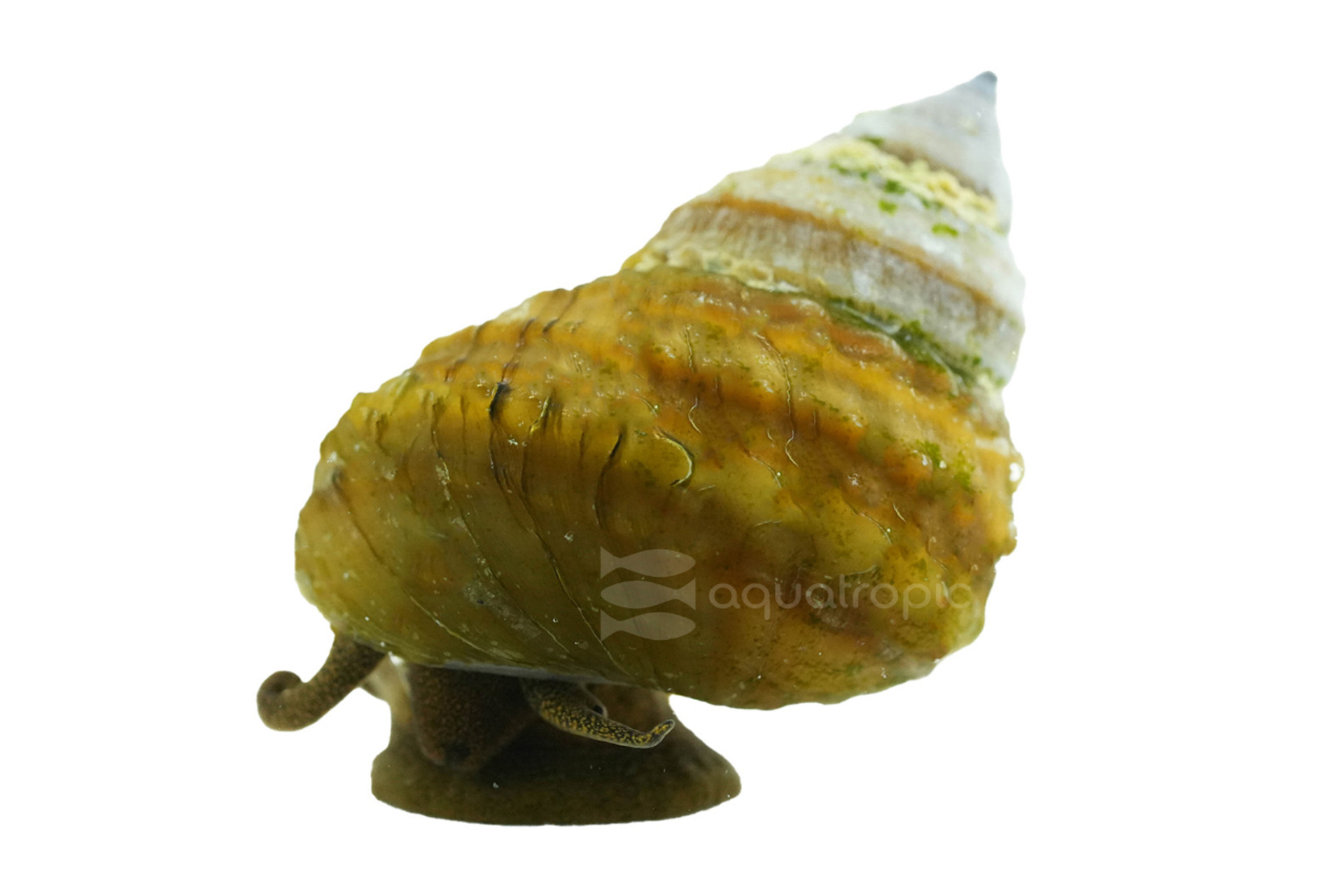Want To See A Snail Play The Piano?

We do too, but that's not going to happen today. We weren't all that shocked to find out that Piano Snails did not, in fact, play the piano, or even resemble a piano. When it comes right down to it, we aren't actually all that sure why they are called Piano snails, they aren't even especially musical. They are, however, very cool little critters, deserving of your attention regardless of if you are a species collector, or snail enthusiast, or just an aquarist looking for an interesting snail to add to your display.
Taia naticoides (the species name for the Piano Snail) is a relatively large (albeit not huge) snail, with adults maxing out around an inch and a quarter tall. Coloration wise, they are most frequently seen with an ice cream twist of somewhere between white & black and brown & gold, though occasionally, all brown ones are seen. Young snails of this species are incredibly active, and you'll rarely see them rest, though this behavior fades somewhat with age.
Originally, these snails were thought to be from a single location, Inle Lake in what was once known as Burma, but is now called Myanmar. Myanmar has been in embroiled in a bloody military coup since 2021 and suffered from substantial social and political instability for years before this. As a result, there is on-again / off-again species availability from this region, and obviously they have bigger things to sort out than getting us snails. All that being said, more recently these snails have become available from Vietnam and India, and as such, the supply has become much more reliable.
Taia naticoides is part of the family Viviparidae (river or mystery snails), and they are also viviparous, meaning they give live birth. Every 21 days or so, females can produce a fully formed, but little (just shy of 1/8 of an inch tall) snail, and as far as we've seen, they do this one at a time. Which means that while breeding this snail is possible, even likely, in captivity, the rate of reproduction is so slow that it is very difficult to do so on a commercial level. On the plus side of this slow repro, is that it is impossible for them to overrun an aquarium. If you are interested in trying your hand at breeding them, they can't be told apart by their shells as far as we know, though males are supposed to have thicker antennae. The best way to ensure sex distribution is to buy a large group of them. Then, just keep an eye out for babies!
Husbandry wise, Taia naticoides are very easy to keep. They are subtropical in nature and can tolerate a pretty wide range of temperatures; temps as low as 60 and as high as 80 Fahrenheit are okay but should be pretty consistent. Activity levels will be noticeably higher at the warmer end of this range. They are not sensitive to hardness levels and will be just fine in a wide range of KH and GH values. In regard to pH, shoot for a value around seven, or slightly over. As far as aquarium size, as long as there is adequate food, and a stable environment, a few of these could be kept in displays as small as two gallons. In the wild, these snails are often collected from silty areas, and older snails will burrow down into sand or silt for rest, and at least some of the display should have an open area of soft sand for them to get into.
Piano Snails are very peaceful and can be kept with other snails, pretty much any fish (at least the ones that won't eat/harass them – no puffers!) and even shrimp. As filter feeders, they are also good additions to displays with other similar feeders like fan shrimp and clams. Avoid keeping them with snails that are “fast” movers, and rapid reproducers as the Piano Shrimp may struggle to get enough food. As with any snail, mixing them with Crayfish (or “freshwater lobsters”) ends with a well-fed crayfish.
Piano Snails are safe with plants but of limited use in regard to algae consumption. Conversely, they are excellent detritus consumers, and can also filter feed, though it is unclear as to the extent of this. They should be fed, and we utilize Nutramar's Algae and Color Boost shots for this job, which they will consume. Some aquarists attempting to breed the snails, also report success in target feeding them spirulina slurry. Clean, dry leaves from safe trees like oaks, birch and magnolias are a good addition to the aquarium as they offer a large amount of surface area for biofilm and make great food for Taia naticoides as they decompose. Leaves will often also bring some tannin to the aquarium and will affect the color of the water to varying degrees.
Hobbyists often overlook snails as part of their displays, and this is a mistake. Piano Snails are a great addition, they'll clear up uneaten fish food and fish waste. They are attractive and interesting. They'll reproduce in the home aquarium, without completely overrunning it, something that is oh-so-possible with many other species of snails. They will mix well with other snails that are more aggressive algae eaters. What's not to love? Head to your Local Fish Store and ask them about getting you a bunch of Taia naticoides from Aquatropic today!